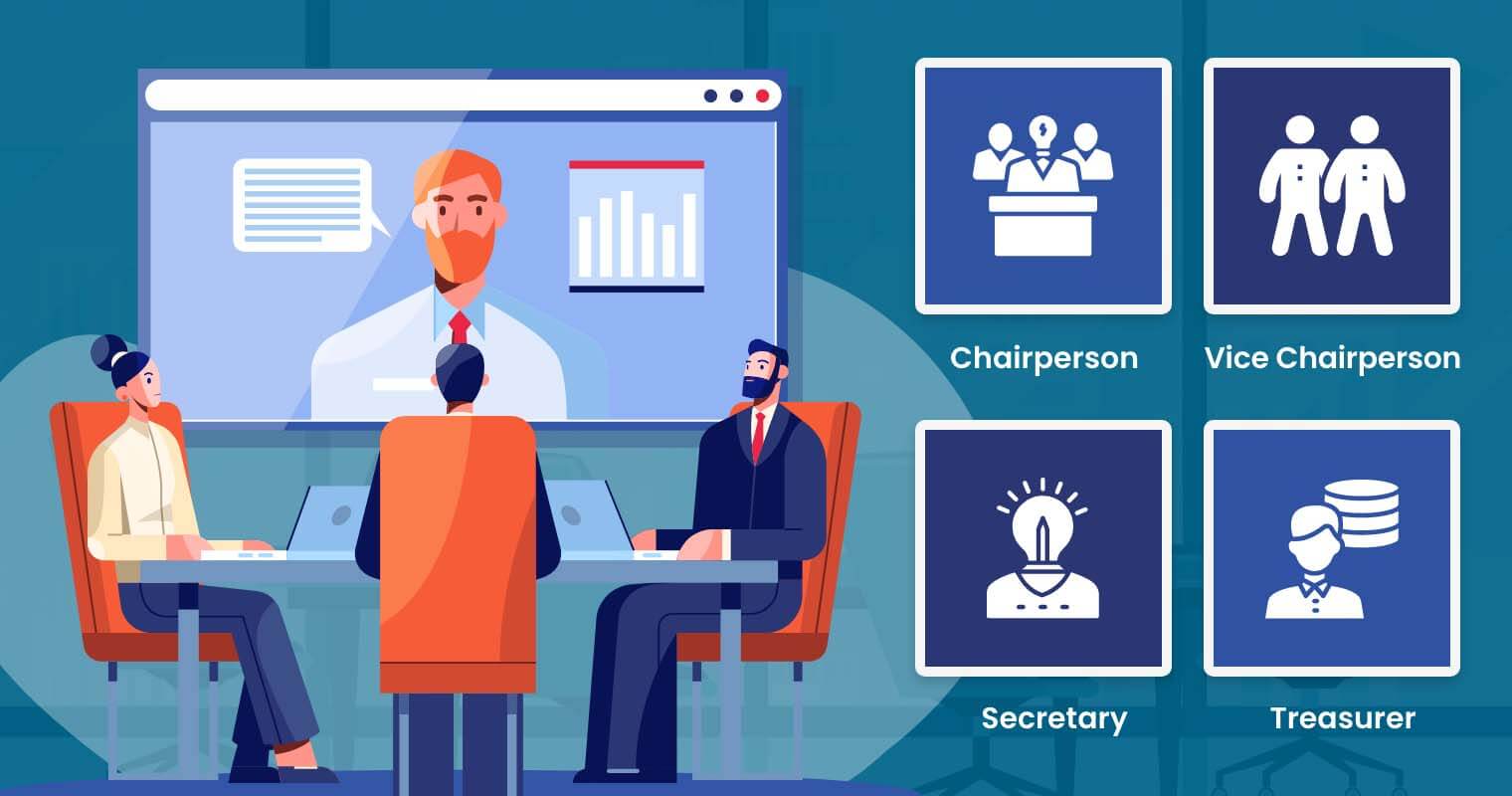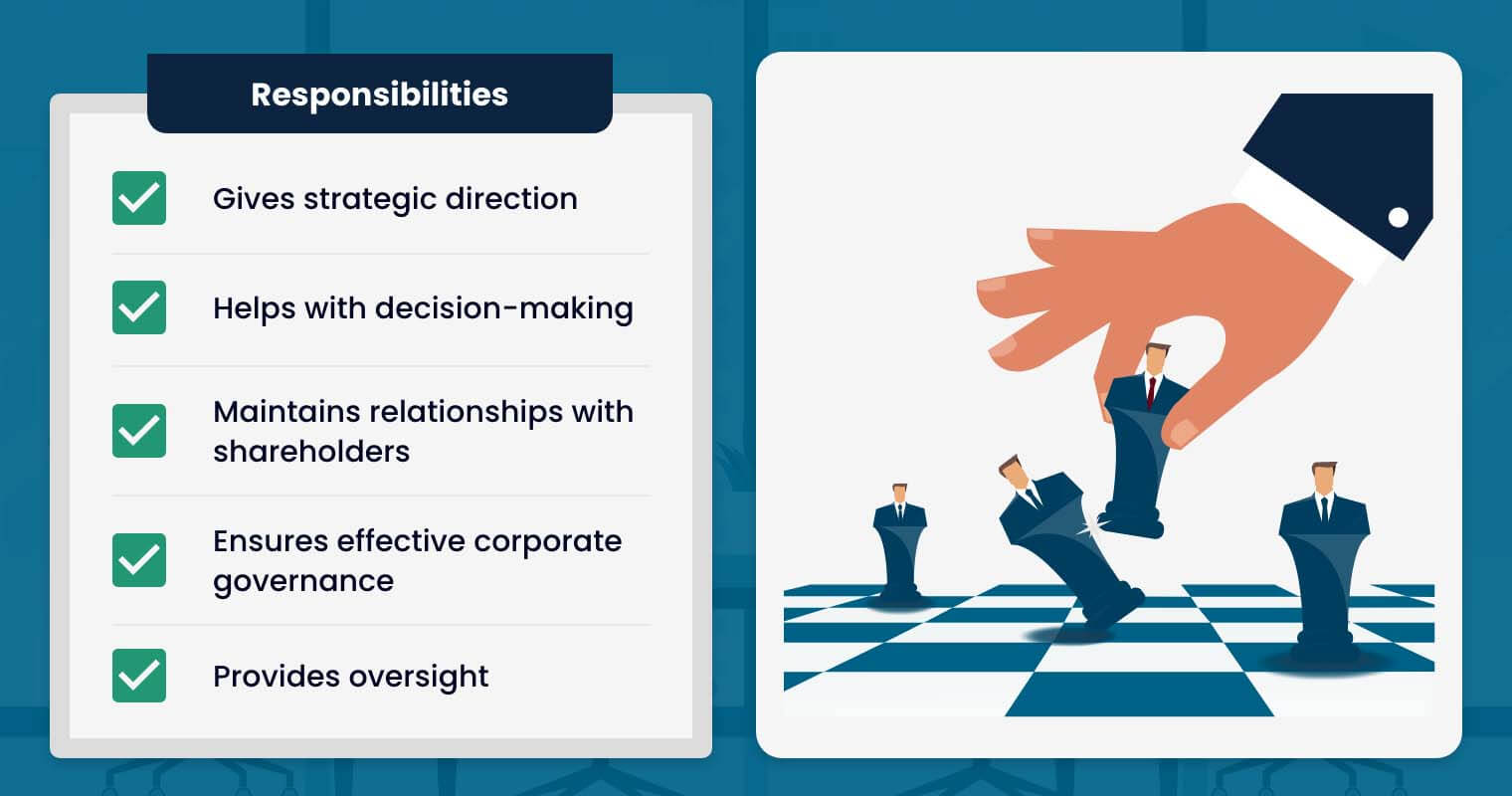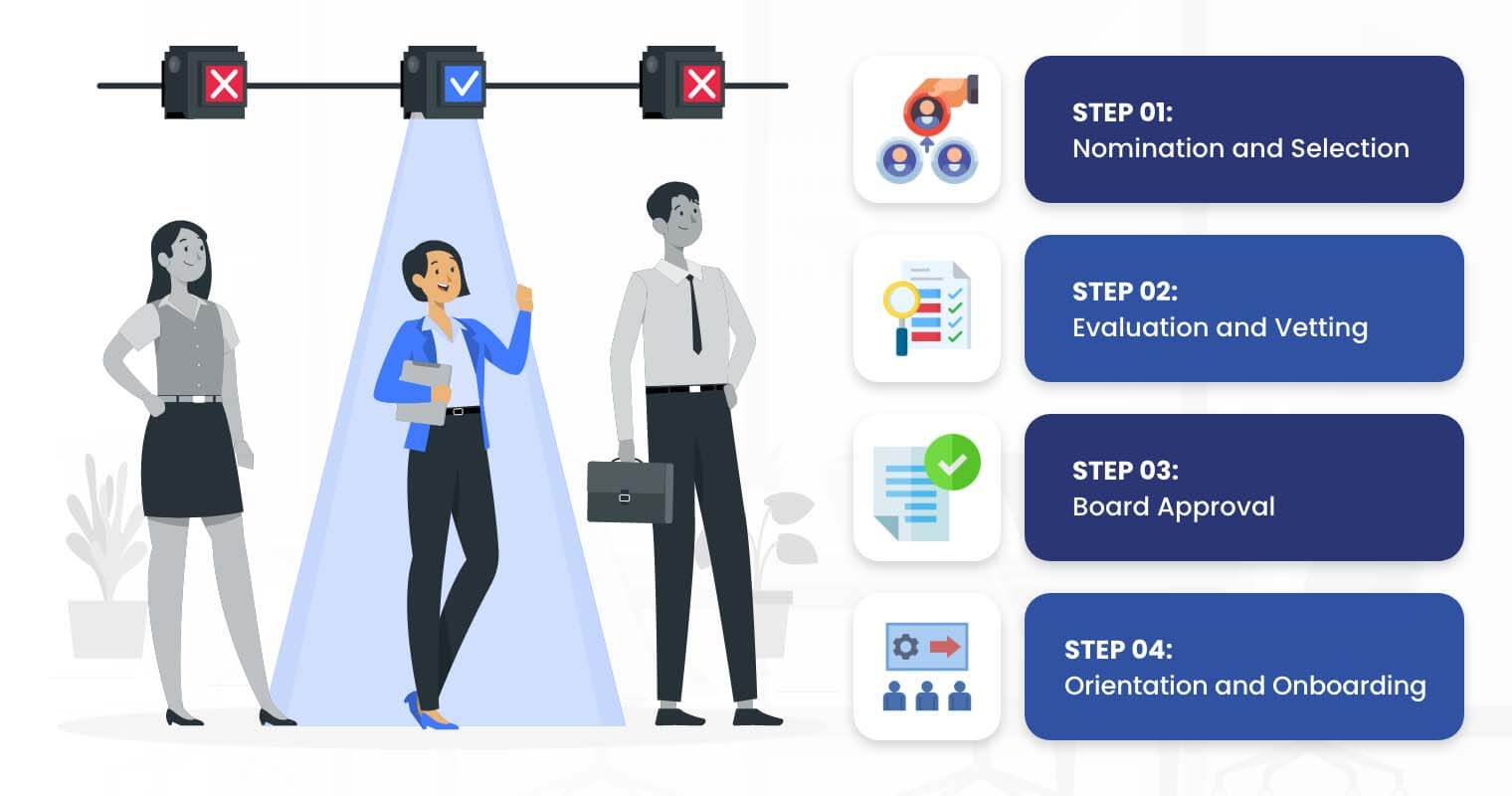When it comes to understanding how organizations operate, leadership structures are key. At the heart of these structures is the executive board. As the decision-makers, the executive board holds significant power and responsibility in shaping the direction and operations of the organization.
In this article, we will delve deeper into executive boards’ positions, their significance, and how they function.
What is an executive board?
It’s easy to confuse the executive board and the board of directors as they share some roles, but if there is one thing to note, the executive board is simply an extension of the board of directors.
An executive board, often referred to as an executive committee, is a governing body that guides the organization’s strategic direction, operations, and overall performance. Composed of senior-level executives appointed to serve on behalf of the board of directors, the executive board holds a considerable decision-making authority and fiduciary responsibility to act in the company’s and stakeholders’ best interests.
For a larger company with numerous C-suite executives, establishing a smaller, more agile executive board can help streamline the resolution process on urgent matters and ensure that all voices are heard efficiently.
Board of Directors vs Executive Board
Since the board of directors is responsible for overseeing the organization, making important decisions, and creating policies, it could get overwhelming to handle all tasks directly. Therefore, they form subcommittees, like the executive board, to ensure efficient management of specific areas.
The executive board, then, serves as a vital component in the leadership structure, bridging the gap between strategic directives set by the board of directors and their implementation in daily operations. They act as the decision-making body for prompt actions but are accountable to and provide updates to the board of directors.
When it comes to electing the members, the current board of directors is given the right to nominate capable candidates to join the board, or potential candidates can volunteer themselves and solicit votes from fellow members through signatures. The executive board members, on the other hand, are appointed by the company’s chair or the board of directors. Both elections should follow the organization’s bylaws.
Executive Board Positions and Responsibilities

The makeup of an executive board can change based on the organization’s type and size. However, the specific members serving on the board should be clearly defined in the organization’s bylaws.
The common executive board positions often include:
Chairperson
Often called the chairman of the board, this position typically presides over meetings, sets the agenda, and represents the board to external stakeholders. They provide leadership and guidance to the board members and may act as liaisons between the board and senior management.
Vice Chairperson
Vice-chair is the second most important position on the board. Their roles revolve around assisting the chairperson in their duties and may also step in to fulfill the chair’s responsibilities in their absence.
Secretary
The board secretary is responsible for maintaining accurate records of board meetings, including minutes and resolutions. They also ensure that all legal and regulatory requirements related to board documentation and reporting are met. Additionally, the secretary may handle correspondence and communications between the board and stakeholders.
Treasurer
The treasurer oversees the organization’s financial matters and ensures the integrity of its financial reporting. As the chair of the financial committee, the treasurer may also provide financial guidance to the board and ensure compliance with financial regulations and policies. In small corporations, this role is often combined with that of the secretary, forming what’s known as the secretary/treasurer position.
Roles and Responsibilities of the Executive Board

The collective expertise of the executive board members ensures comprehensive oversight across all facets of the organization’s operations. Below is a list of their specific functions:
1. Gives strategic direction
Strategic direction is an organization’s long-term course or path to achieve its objectives and fulfill its mission. As the committee in charge of this path, the executive board is deeply involved in strategic planning. They see through the creation and implementation of plans and provide insights along the way.
The executive board analyzes market trends, competition, and internal strengths throughout the process to identify opportunities and risks affecting strategic goals. They also review proposed strategies and consider their pros and cons before approving the plan that guides the organization’s growth and resilience.
2. Helps with decision-making
The executive board contributes to the critical strategic decisions that shape the direction and operations of the company. This authority involves making quick decisions when urgent matters arise without needing to gather the entire board of directors. Furthermore, they influence high-level strategic decisions, such as mergers and acquisitions, organizational oversight, and board development.
3. Maintains relationships with shareholders
The executive board acts as a liaison between the organization and its shareholders. They keep shareholders informed through regular meetings, reports, and disclosures where they talk about the company’s performance, finances, and strategic plans.
Additionally, the executive board takes into account shareholders’ concerns and feedback when deciding on matters that affect the company’s course and value. They strive to maintain a constructive relationship with shareholders built on trust and mutual respect.
4. Ensures effective corporate governance
Corporate governance refers to the rules and processes by which companies are directed and controlled. The executive committee is vital in this, supporting the board in setting procedures and ethical standards to uphold integrity, transparency, and within the organization – while also ensuring alignment with the interests of its stakeholders.
5. Provides oversight
As the bridge between the board and the operational management, the executive committee is responsible for reviewing and monitoring policies, plans, and projects to ensure they are achieving expected outcomes. This task often involves:
- Overseeing the company’s policy on human resources, ethics, security, and quality management, including monitoring the committees that work on policy development;
- Providing guidance and oversight on risk management strategies and practices to mitigate potential risks to the organization;
- And assessing existing committee chairs every three years or as necessary to make sure the roles are effectively filled.
How Members of the Executive Board Are Appointed

The process of appointing executive board members is governed by the organization’s bylaws or corporate governance guidelines, which outline the nomination, selection, and appointment procedures. Here is a step-by-step process:
Step 1: Nomination and Selection
Potential candidates for the executive board may be nominated by existing board members, shareholders, management, or external stakeholders. Criteria for selection often include:
- Professional expertise
- Industry experience
- Demonstrated commitment to the organization’s mission and values
Typically, the board nominates the finance, governance, and communications committee chairs to take on these roles to ensure that expertise and insight are readily available when urgent decisions need to be made.
Step 2: Evaluation and Vetting
The company chair or directors evaluate and vet nominees to assess their suitability for board membership. This step may include reviewing their professional background, skills, reputation, potential conflicts of interest, and any relevant regulatory or legal considerations.
Step 3: Board Approval
Once nominees have been vetted, the existing executive board members vote to approve their appointment. In some cases, shareholders may also have a role in confirming or ratifying board appointments, especially in publicly traded companies where shareholders have voting rights.
Step 4: Orientation and Onboarding
Newly appointed executive board members undergo an orientation and onboarding process to familiarize themselves with the organization. This process involves meetings with senior executives, board committees, legal advisors, and other relevant parties to provide comprehensive context and support for their role on the board.
How the Executive Board Performance Is Evaluated
While specific evaluation methods may vary depending on the organization’s size, structure, and industry, common approaches include:
Annual Board Self-Assessment
Executive boards typically conduct annual self-assessments to evaluate their effectiveness and identify areas for improvement. This process often involves board members completing surveys or questionnaires that assess their performance in key areas, such as strategic planning, risk management, financial oversight, board dynamics, and stakeholder engagement.
The self-assessment results are then analyzed and discussed by the board to develop action plans for addressing any identified weaknesses or opportunities for enhancement.
Board Committee Evaluations
Committee evaluations may assess factors such as committee composition, meeting effectiveness, adherence to best practices, and the quality of recommendations made to the entire board. Feedback from committee members, board leadership, and management is typically incorporated into these evaluations to identify opportunities for improvement and optimize committee performance.
Alignment with Strategic Objectives
The executive board’s performance is often evaluated based on its ability to align its decisions and actions with the organization’s strategic objectives and long-term goals. Boards may assess their success in driving strategic initiatives, fostering innovation, and creating sustainable value for stakeholders.
Key performance indicators related to financial performance, market share, customer satisfaction, employee engagement, and other strategic priorities may be used to measure progress and evaluate the board’s impact on organizational outcomes.
Stakeholder Feedback
Executive boards may seek feedback from stakeholders, including shareholders, employees, customers, suppliers, regulators, and community members, to assess their perception of the board’s performance and effectiveness in the following areas:
- Transparency
- Accountability
- Communication
- Responsiveness
Some common ways to gather input include surveys, interviews, focus groups, and town hall meetings. Incorporating stakeholder feedback into the board evaluation process helps ensure that the board remains accountable to those it serves and identifies opportunities to enhance trust and credibility.
Frequently Asked Questions (FAQs)
Is the CEO part of the executive board?
Typically, no. However, it isn’t uncommon for the CEO to attend executive board meetings or have a position on the executive board, especially in situations where the CEO has significant influence or is also the board’s chairperson.
How often does an executive board meet?
Unlike the board of directors, the executive committee has a more regular board meeting cycle. In some organizations, executive boards may meet quarterly, while others may meet monthly or on an ad-hoc basis as needed to address specific issues or make critical decisions.
Often, the committee utilizes modern board meeting tools such as a board portal to cater to the members when location constraints or scheduling conflicts arise.
How many people should be on an executive board?
Executive boards are usually smaller, with three to seven members, which helps them make decisions more efficiently.
How Convene Helps Your Executive Board Operations

The effectiveness of the executive board relies not only on the quality of its members but also on the efficiency of its processes. Therefore, most rely on modern board management solutions like Convene.
As a leading board portal software, Convene equips executive boards with user-friendly tools and features to streamline board processes and improve collaboration. With Convene, the board can conveniently attend meetings from anywhere and any device, review and sign off documents, cast votes, and collaborate effortlessly in real-time.
The executive board can also benefit from Convene’s secure, shared digital space, which allows them to access information safely. Features such as multi-factor authentication and role-based permissions ensure that only authorized individuals have access to sensitive materials, thereby enhancing confidentiality and data security during board deliberations.
Explore how Convene’s features can elevate your board’s performance and streamline governance practices. Reach out to our sales team to book a demo today.
Jess is a Content Marketing Writer at Convene who commits herself to creating relevant, easy-to-digest, and SEO-friendly content. Before writing articles on governance and board management, she worked as a creative copywriter for a paint company, where she developed a keen eye for detail and a passion for making complex information accessible and enjoyable for readers. In her free time, she’s absorbed in the most random things. Her recent obsession is watching gardening videos for hours and dreaming of someday having her own kitchen garden.











